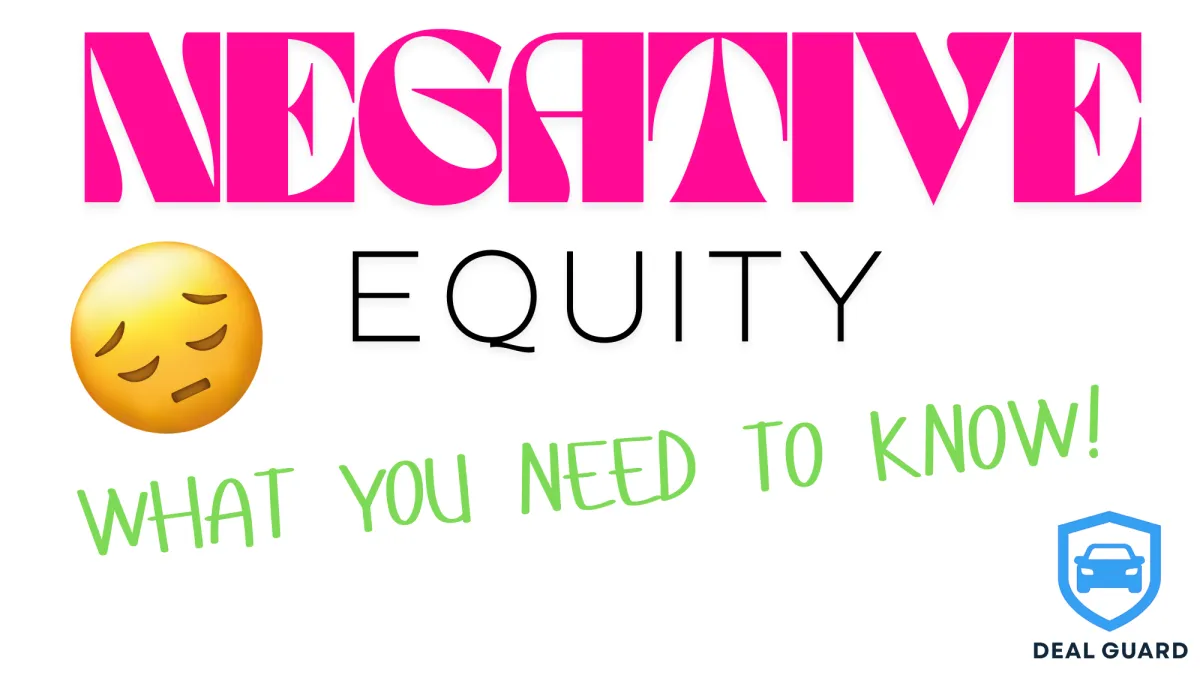
Negative Equity — The Trap That Sucks You Dry (And How to Avoid It)
Negative Equity — The Trap That Sucks You Dry (And How to Avoid It)
“Rolling over negative equity is like using a credit card to pay off another credit card… except this one comes with four wheels and 72 months of regret.” 💳🚘 - Chase Jordan
Negative equity is one of the dealership’s best-kept secrets—and one of the consumer’s most expensive mistakes.
If you owe more on your car than it’s worth, you’re already in the red.
And if you’re not careful, you could drag that debt into your next vehicle and beyond.
Let’s break it all down—and make sure it never happens to you again.
💸 What Is Negative Equity?
Negative equity happens when you owe more than your car is worth.
Example:
You owe $28,000 on your loan.
Your car’s trade-in value is $23,000.
You’re $5,000 upside down.
That $5K doesn’t just disappear when you buy your next car—it gets rolled into the new loan.
Now you’re financing two cars in one… and probably don’t even know it.
🚨 Why It’s So Common
Long loan terms (72–84 months) cause slower equity build.
Low or no down payment means you're starting at a disadvantage.
Depreciation hits fast—new cars lose 10–20% the moment they leave the lot.
High-interest rates mean you pay more toward interest before touching the principal.
And dealerships?
They won’t stop you from rolling in negative equity—they’ll gladly finance it into your next car at an even higher rate.
📉 How to Know If You're Upside Down
You are likely in a negative equity position if:
You bought a car in the last 1–3 years with little or no down payment
You have a loan term longer than 60 months
You’ve driven more than average mileage (15,000+ miles/yr or 25,000+ km/yr)
You financed a car at a high interest rate (especially during 2022–2024)
👉 Pro tip: Look up your current vehicle's trade-in value using multiple tools (not just one).
Then check your loan payoff amount.
If the value is lower—you’re upside down.
🧠 How to Avoid Negative Equity
Put at least 10–20% down when financing a car - not ready for that, save a touch longer.
Choose loan terms under 60 months whenever possible - 82 months is not helping you
Avoid extended warranties, add-ons, and upsells that increase loan balance
Buy cars that retain value better (Deal Guard helps identify these daily for clients)
Pay extra toward principal monthly if possible
Don’t trade too early—ride out at least 3+ years unless there’s a strong reason
🛑 Don’t Roll It Over (Unless It’s Strategic)
Dealers love to say, “We’ll just roll it into your next deal.”
Sounds convenient—until your new car starts with $5,000 of someone else’s financial baggage (yours).
When is it worth rolling?
✅ You’re moving into a lower-interest loan
✅ You’re downsizing into a more affordable car
✅ You’re combining with cash down or trade equity to neutralize the gap
Otherwise?
It’s just digging deeper.
🛡 How Deal Guard Stops the Bleeding
As your trusted car buying concierge service, Deal Guard:
Reviews your current loan-to-value ratio
Calculates your exact negative equity, not just dealer guesswork
Advises if it's better to keep your car, refinance, or trade
Protects you from dealers rolling it into overpriced finance terms
Finds cars with better resale value to rebuild your equity faster
We don’t let negative equity sneak past us—and we never recommend buying unless we know your entire picture.
😎 Final Word from Chase
Negative equity turns a car into a money trap—and dealerships bank on you not understanding it. Let our car buying concierge service at Deal Guard help you.
At GetDealGuard.com, we take a hard look at your numbers and protect your future—not just your current deal.
You deserve a car you can afford, not one that buries you deeper in debt.
🎯 Have a trade-in with a balance?
Let Deal Guard assess the equity situation before you buy.
It’s the smartest move you’ll ever make in the car world.
